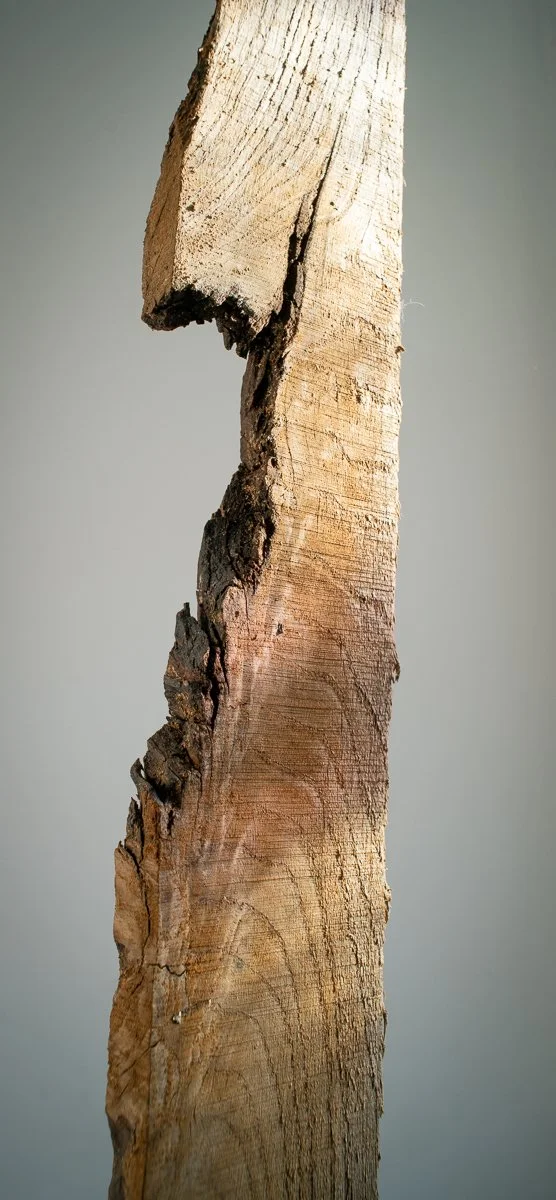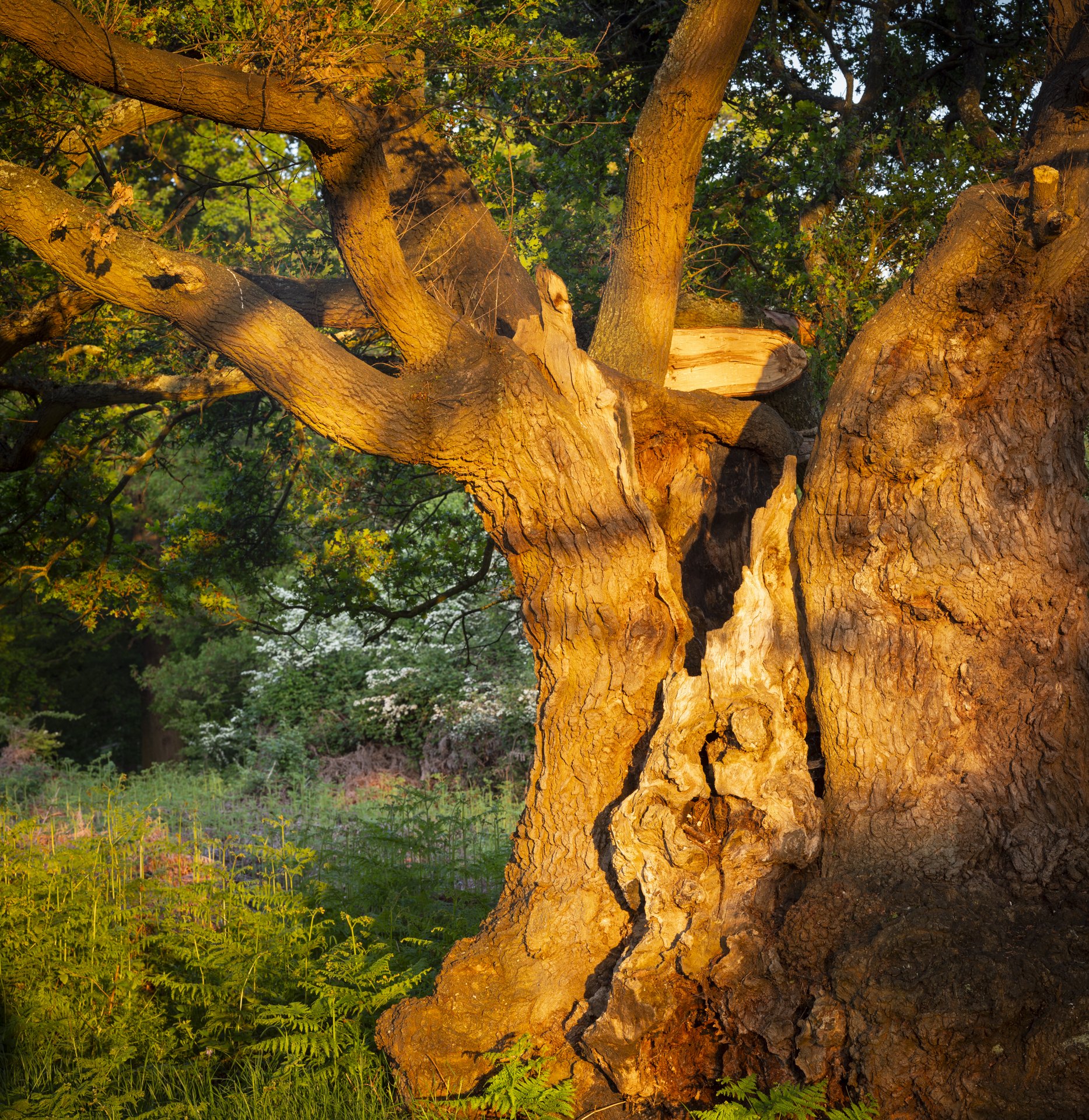The Rush Richmond Park Camera
Two years ago I designed a new camera that I hoped would combine the control and satisfaction of the large format process with the advantages of digital capture. I built a prototype out of oak, linking the tool to the central features of most of my London park photographs and named it the Rush Oak camera. This camera was behind all of my work for the next two years, carried around London and out into the wilderness of mid Wales, where it performed very well. As hoped, it marked a return for me to the world of large format photography, slow considered and refined, and of unbeatable technical quality. There was one more logical step to take though, and after discussion with the Royal Parks I was lucky enough to obtain some pieces of actual Richmond Park trees - a board of oak from the nature reserve and part of a cherry tree that once stood near Richmond Gate. As these were seasoning, I continued using the prototype while slowly making plans for the new, improved camera. This was not just to be a technical upgrade but a tool to communicate the vision of celebrating trees.
Work on the new camera was slow and with a busy weekly schedule of other jobs I’d often only be able to make one small part a week. Like the prototype, every piece was made by hand with the only power tool a drill press. The metal components, mainly made of stainless steel, were cut and shaped with saws and files in my garden. As the camera was to be a showcase of wood as a beautiful natural material, I carefully chose the sections of Richmond oak and cherry that had the most attractive grain patterns, and in some cases, networks of insect holes that indicated their origins in a nature reserve rather than a timber plantation. The consequence of this though was rock-hard wood with very difficult grain to cut and plane, further slowing progress. The woodwork was done with traditional techniques and all the parts were assembled with dovetail joints. Even the focusing knobs were made of cherry wood, for which I designed a basic miniature lathe.
In April 2023 I finally assembled the parts of the Rush Richmond Park Field Camera: the large format body, removable ground glass back and the 6x7cm format sliding digital back which takes the place of the ground glass. Later in the month I took the camera back to Richmond Park and took the first photographs of ancient oaks in High Wood. The improvements to the previous design range from the larger format size to greater precision of focusing and a much more finely engineered sliding back which enables a simple and quick transition from horizontal to portrait orientation. The images are composed of 8 or 9 separate exposures covering the 6x7cm field and when stitched together give a final resolution of around 200 megapixels. The largest single-shot digital backs currently available (at huge cost) are 150 MP, and they’re not generally attached to wooden cameras. Such high image quality necessitates the best lenses, and those that worked well with the first Rush camera have not all been successful with the second. Although the Richmond Park camera is now in regular use, I’m still refining the lens selection, adapting and remounting a range of different kinds of lenses to provide a good choice of angles of view. Most of these are currently ones designed for large format film cameras.
Dead oak comes to life
The Richmond Park camera is already in regular use across my projects and in commissions and has had an amazing reception so far. Its work in Richmond Park itself has only just begun, but already I’m planning a new concept of exhibition featuring the future photographs. Being one of the highest resolution cameras in the world, it has an amazing capacity to record life. Every photograph of an ancient tree will automatically contain hundreds of miniature portraits of invertebrates, plant life and more, many of which I’ll have been unaware of in the field. I’d like to present each tree picture as one large image and set of enlargements taken from it which each illustrate some facet of the complete ecosystem or the broader natural world - insects species specific to the tree, saprophytic fungi, lichens, birds and even aspects of the sun and moon that might find themselves in the picture. I have yet to establish a time or a venue for this exhibition but have plenty to do producing the material first.
In the Press
I’ve made little effort to promote my project so far, having been absorbed in refining the camera and testing it in the field and then working on commissions. I hope to find the time to write and talk about cameras and trees at greater length in the near future. In the meantime here’s an initial story broadcast by ITV News in May:
Veteran of the Conduit, Richmond Park
Richmond Park Field Camera
Richmond Park Field Camera with adapted Fujinon 100mm lens, Richmond Park, September 2023
By October 2023 the camera had completed its first major commission in Lambeth while increasingly minor technical refinements took place in the background - focusing mechanics and lenses, some of which I adapted from their original mounts and housings. As the commission drew to an end I started to think about Richmond Park again, with the new agenda of exploring trees and the life surrounding them. I’ve been lucky enough to experience some very good late summer weather across Lambeth but I’m now keen to see what the very best tool I’ve ever had at my disposal can do with some of the greatest moments of the autumn season, and in its ancestral land too. Such is the effectiveness of the Richmond Park camera, I feel like an astronomer viewing a mysterious part of the universe with a revolutionary new telescope. This is to be deeper insight into nature than pictures of parks have ever provided before.
Willows on the Waterside, Beverley Brook. Richmond Park Field Camera, Richmond Park, October 2023
Morning Light on Conduit Veteran, Richmond Park, May 2023 - note broken limb near centre.
Early 2024: Removing a section of the limb (with the permission of the Royal Parks)
Circle of Light
Once, somewhere in Richmond Park, grew an oak tree, its twisting branches slowly climbing skyward over decades and centuries, springs and summers pouring light and warmth upon its leaves and this energy building new wood, branches and roots.
This solid, tangible material is the fruit of the sun’s light, captured and preserved from every year of growth. Then, one day the aging tree fell and while most its remains were left in the woods to spread their energy and nutrients back into the living soil, a little found its way out of the park, to be shaped into an instrument to gather light.
Now the wood returns to the same woods and fields, capturing more of the bountiful light of the sun with which to show how the centuries have passed.
Richmond Park Field Camera with adapted 50mm Mamiya lens, late 2023
Closing the Circle
Although the Richmond Park camera is essentially complete, there are still developments to come. What if part of it could be traced to a tree I’ve already photographed? Even more interestingly, could the camera incorporate wood from a still living tree? In the winter of early 2024 I returned to the Conduit Oak to examine a large limb that had split from the tree at least as far back as the beginning of the previous year. It had been partially cut up on site and the smaller parts stacked to decompose and create shelter for wildlife. The largest part, including the original split lay intact, and with the help of the park management, we cut sections from it. Wood from branches isn’t generally used for woodwork as it tends to contain highly stressed fibres, but given the small sizes of camera components, I hope to be able to extract a little usable material. The lowest section once grew almost vertically, so I had particular hopes of cutting flat boards from that. At home I set about planking with typical disregard for modern technology: a large saw (itself not far off 100 years old) and plenty of hard work. I planned the cuts to extract as many quarter-sawn boards as I could, which I hope will be stable as well as bearing the attractive flame pattern of English Oak. Once seasoned I’ll attempt to recreate existing sections of the camera’s woodwork and replace them. For all the extra work, this seems to me like a worthwhile refinement of my circle of light: The camera will incorporate a tree I’ve already picked as a star among Richmond Park’s many veteran trees and which I’ve already photographed quite extensively. Even the breaking of the branch from which the wood came has been recorded in my photographs, and in the future, the 500 year old tree’s continuing growth and evolution will be recorded with the same camera. Having cut through the branch, one final chronological observation has emerged: counting the annual rings, it’s almost exactly as old as I am. It would have begun as a shoot in the mid-70’s and now, 45 years later my life is recorded in the solid wood.
Green oak boards cut from the Conduit Oak, February 2024











